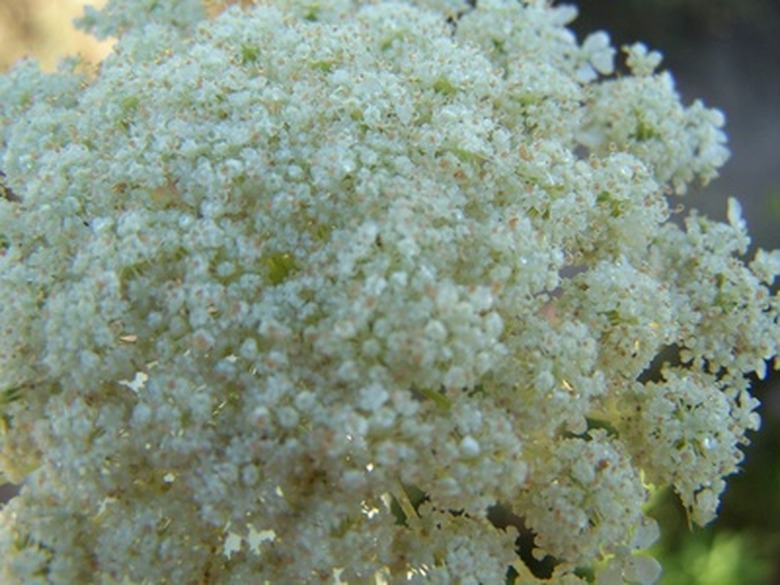How Long Do Queen Anne's Lace Flowers Bloom?
Queen Anne's lace (Daucus carota) gets its name from the round clusters of tiny white flowers that form atop its tall stalks. The biennial herb, also known as "wild carrot," has a six-month blooming period.
Time Frame
Queen Anne's lace blooms from May through October, according to North Carolina State University. Because Queen Anne's Lace is a biennial, its life cycle is two years, with flowers appearing during the second year, according to Fairfax County Public Schools.
Features
The plant's tiny flowers grow in 3- to 4-inch-wide, flat clusters. Each flower produces two seeds, which it releases from mid-summer through mid-winter, according to North Carolina State University. Queen Anne's lace stalks can reach 1 to 4 feet tall.
- Queen Anne's lace (Daucus carota) gets its name from the round clusters of tiny white flowers that form atop its tall stalks.
- Because Queen Anne's Lace is a biennial, its life cycle is two years, with flowers appearing during the second year, according to Fairfax County Public Schools.
Significance
Queen Anne's Lace can crowd out native species. In Ohio, Iowa, Michigan and Washington, it is classified as a noxious weed, according the U.S. Department of Agriculture.
Fun Fact
Queen Anne's Lace produces an edible root that is a type of carrot, according to Fairfax County Public Schools.
Dry Queen Anne's Lace
Queen Anne's lace grows wild along roadsides and in alleys across North America. Gently shake the blooms to remove any loose pollen or other debris. Place a double layer of white paper towels on top of the papers. Trim the stems closely to the base of the flower head and lay them single file onto the paper towel so they face upwards. Gently bend the stem and fold it under the bloom so that it will dry in place, providing adequate room to attach florist wire later. A large book or block of wood works well. Queen Anne's lace is adequately dried when it holds it shape and does not flop or fold when picked up.
- Queen Anne's Lace can crowd out native species.
- Gently bend the stem and fold it under the bloom so that it will dry in place, providing adequate room to attach florist wire later.
